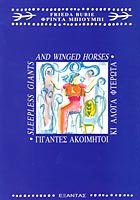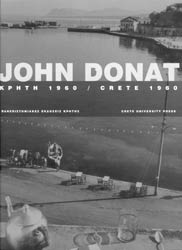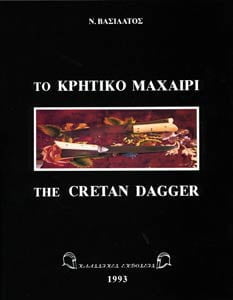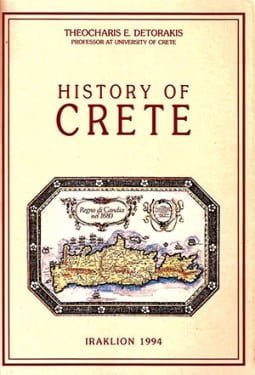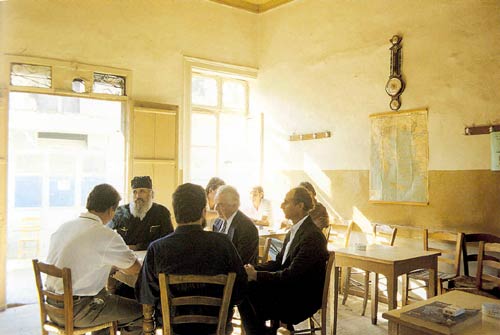Still life in Crete by Anthony Cox
A book about living in a village in Crete
The siren call of Crete can be irresistible, like a sensuous woman who beckons you to come to her and find contentment in the warm, safe, embrace of her bosom. For one who hears the call, there is some initial caution. The siren’s promise is intriguing and almost overpowering, but there is also a sense of tantalizing danger—what if things are not what they appear to be? What if things go wrong?
Well, one cannot find the answer to these questions unless one answers the call, and that is exactly what Anthony Cox and his wife, Susan did when they decided to pack it up and move all their belongings, including their two pugs, to Crete. Cox, a former journalist, weaves a delightful tale of their adventure in Still Life in Crete, a must read for anyone considering settling permanently on the Great Island.
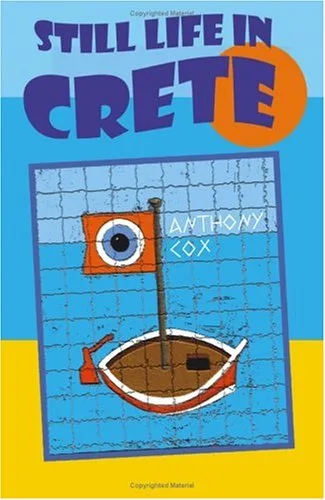
The author of Still Life In Crete, who was also a college lecturer, had an unusual opportunity for an early retirement at the age of forty-six.
His wife worked with computers, was growing weary of the predictable routine, and was ready to walk away. They had a “Cadbury Rose” home in Kent on six acres, but they never saw their neighbors, their land was tree-less, and the view inevitably misty. On top of that the bleak and damp English winters increased their gloom. They fantasized about the smell of fig trees, the sound of the sea, and the sight of the White Mountains. So Anthony and Susan took an enormously deep breath and decided to try buying property in Crete, after ruling out Tuscany and Provence in favor of a place “more earthy.”
Susan’s name from her first marriage had been Angelaki (little angel) and she was fluent in Greek, but neither she nor her husband had ever been to Crete, although they had read about life there. They decided to begin their search in Hania, but traveled to many parts of the island, including Apokoronas, the Akrotiri peninsula, Kastelli, Iraklio, Drapanias, Kolymbari, Melissa, and Polyrinia, to name a few. Hania’s charms grew on them and drew them back. So they concentrated on western Crete and also villages in central Crete which guide books said were “blissfully free of crowds and commercialism.”
The one word I think characterizes their remarkable adventure is “gutsy.” The very decision to leave the U.K. and build a home in a land they had never before visited was gutsy, as was their decision to buy land in Crete before selling their English home, entering into property deals that had rules quite foreign to them, accepting new friends who must have seemed exotic to them and, in turn, being accepted as exotic foreigners by their new, Cretan friends. The story has all the risk, drama, tenderness, and near heartbreak of a love story, with Crete being the object of desire. But it is also a very straight-forward tale of how a couple seeking a major change set their standards of what they wanted in terms of location and quality of life and then went about achieving their dream.
Cox takes us through the intricacies of buying the land while learning to negotiate Greek style, siga-siga (slowly, slowly) of surmounting the bureaucratic hurdles of estate agents and property sales in Crete, standing in queues to pay taxes, registering to pay taxes on something you never owned, land surveys, and something called topographics. He describes the Cretan style of negotiation and their warnings of the ubiquitous Germans forever lurking in the background, ready to buy the property should you be foolish enough to turn it down.
He charms us with his very first description of the plot of land in Afrata that they eventually bought:
“We stood in a window-less room with an earth floor… it was more like a stable… the building was irrelevant. We stepped outside, into the sunlight, and saw a patchwork Mediterranean landscape of dry-stone walls, olive groves, and vineyards. The little building had its back towards a towering wall of scrub-covered mountain, on which sheep were grazing, while on the other three sides were views of more distance mountains—including the majestic peaks of the Lefka Ori, and the sea, which sparkled beneath an Olympic blue sky.”
The building was the home of a mule named Turnip, but that matters naught to Antonio and Suzannah, as the Cretans called them, because they see beyond the shack to the possibilities presented by the mesmerizing landscape.
We learn how they manage to hire laborers to build their piece of paradise, acquire additional land, learn how to tread grapes Cretan style, find the best tavernas and the best food, participate in the traditional holidays, appreciate the fact that in Crete, the old “count for something in the sum of things,” avoid fellow expatriates, accept the passionate involvement of the 150 residents of Afrata in each others’ lives and in theirs, accept that the semi-detached nature of English life is now in their past, and reinvent themselves as lotus eaters.
Perhaps it is because Anthony and Susan are relatively young—in their forties—that there is little discussion in the story or worry about health care or long-term financial stability. It appears that an opportunity presented itself and they simply seized the day, or in this case, they seized the island.
It is a delightful read and it made me want to pack it up and join them in Crete. But then come the questions: what about health care, what about my possessions, what will become of my precious books, and how can I possibly live without them, will I be able to sell my house, can I manage financially? And so on and so forth. I suppose Anthony and Susan would consider these questions mundane, because they just went ahead and they now enjoy living in Crete. Bravo!
* Review by Aurelia, a Philhellene, who specializes in writing books about Crete and Greece
© explorecrete.com All Rights Reserved. Reproduction or copying without permission is prohibited.

